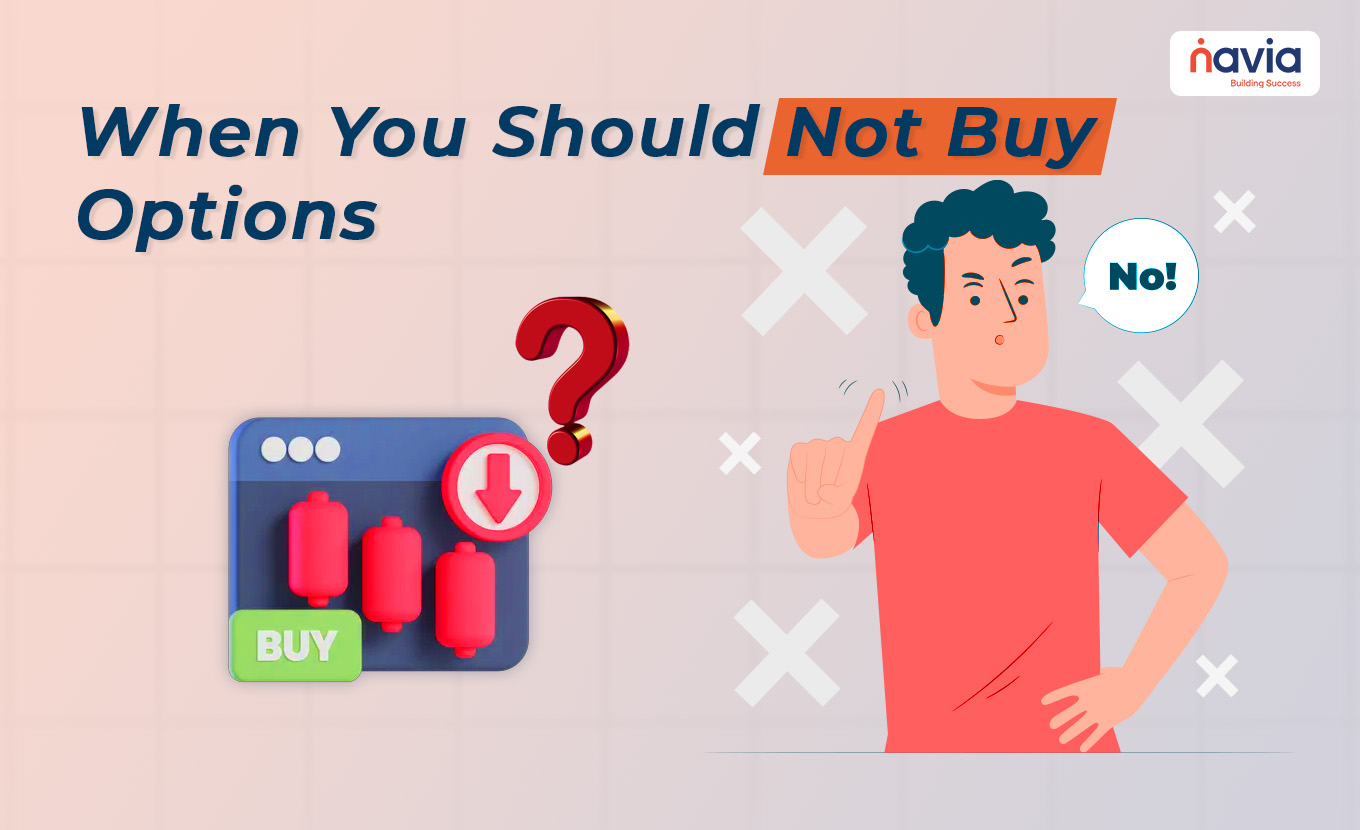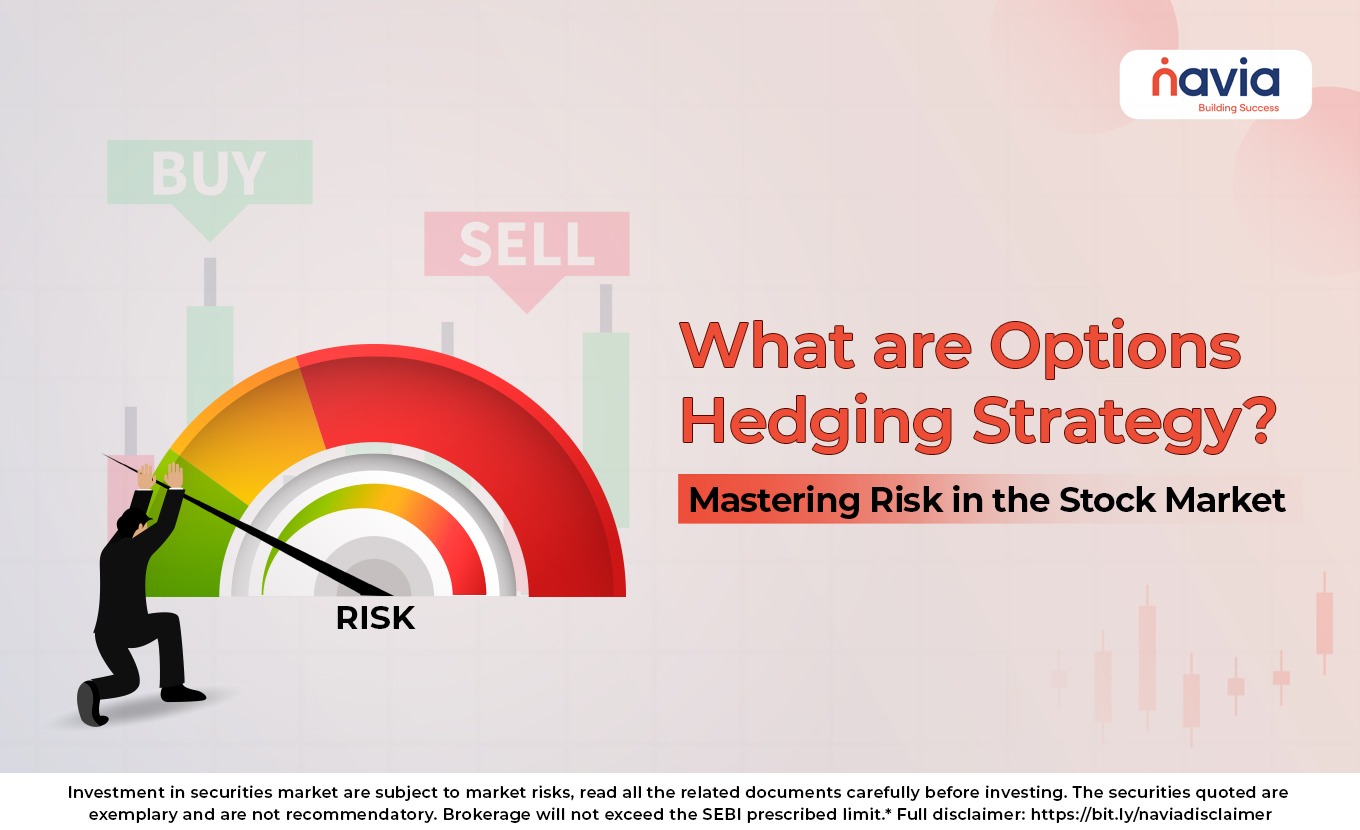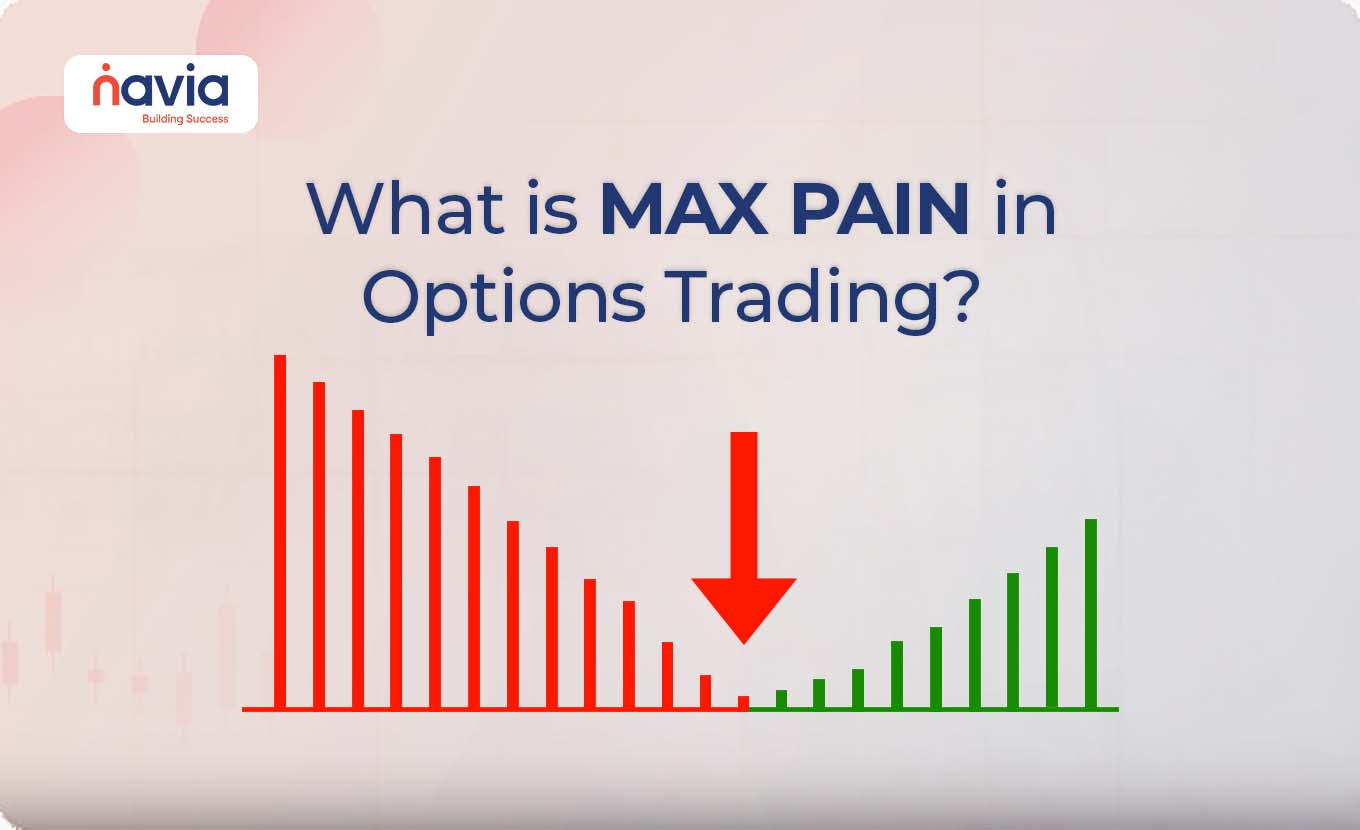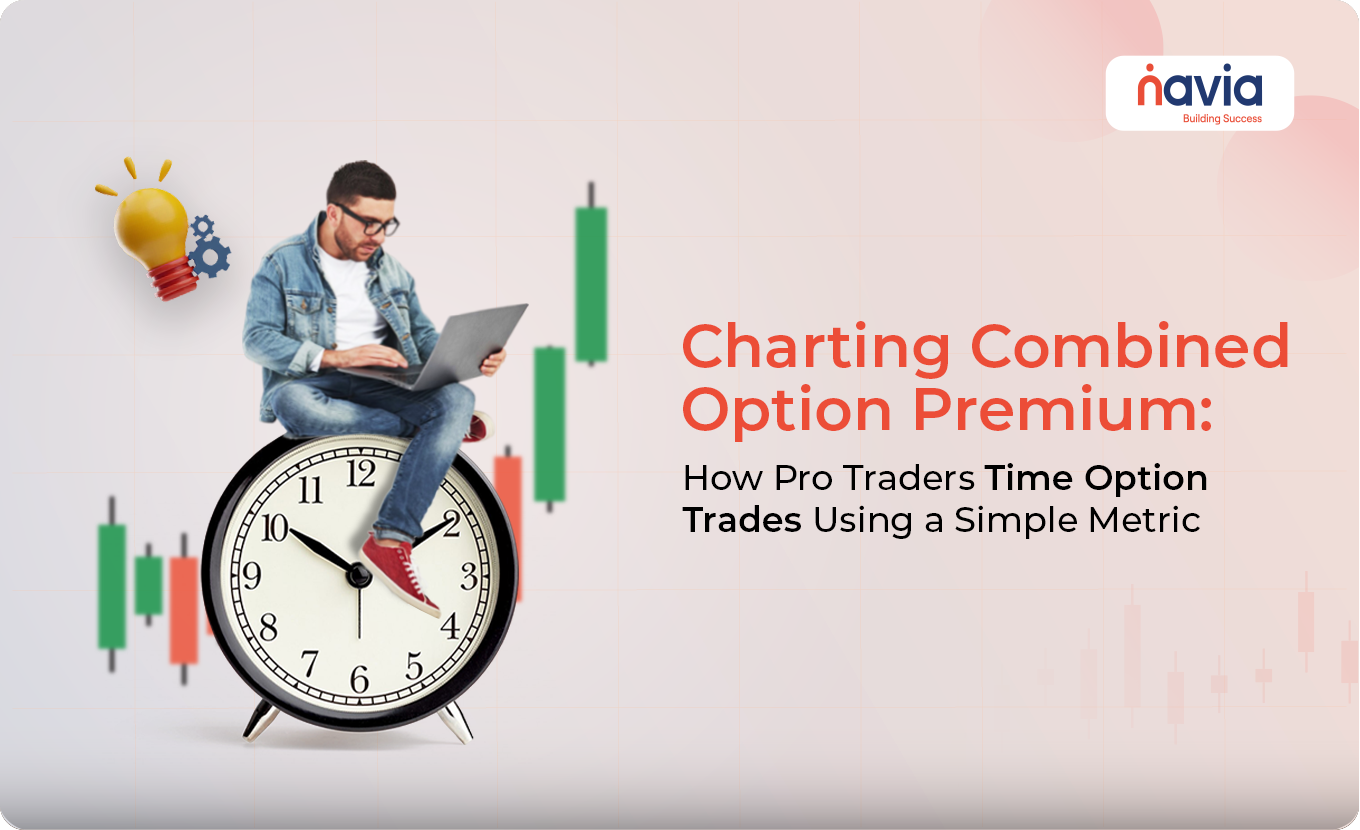When You Should Not Buy Options

Options trading is a powerful tool in the financial markets, offering traders the ability to leverage their positions and potentially earn significant returns. However, options trading is not without its risks, and one of the biggest mistakes that beginner traders make is buying options at the wrong time or under the wrong conditions. Understanding when not to buy options is crucial to avoid losses and to build a profitable trading strategy. In this blog, we will explore the scenarios where purchasing options might not be the best idea, and we’ll provide you with some practical advice on how to navigate these situations effectively. We’ll also touch on how you can use the Navia Mobile App to view live Option Greeks, which can help you make more informed trading decisions.
What Are Options?
Before diving into when not to buy options, it’s essential to have a basic understanding of what options are. An option is a financial derivative that gives the holder the right, but not the obligation, to buy (call option) or sell (put option) an underlying asset, such as a stock, at a predetermined price (the strike price) before or on a specified expiration date.
Options are highly flexible and can be used for various strategies, including hedging, income generation, and speculation. However, because of their complexity and the various factors that affect their pricing, options can be risky, especially for beginners.
Common Mistakes When Buying Options
Many beginner traders are attracted to options due to their potential for high returns, but without proper knowledge, they can easily fall into traps that lead to losses. Here are some common mistakes that you should avoid when buying options:
1. Buying Out-of-the-Money (OTM) Options with Little Time Left
One of the most common mistakes is purchasing out-of-the-money (OTM) options that have little time remaining before expiration. OTM options are those where the strike price is far from the current price of the underlying asset. While these options are cheaper, they have a lower probability of expiring in the money.
🔷 For example, if you buy a call option on a stock trading at ₹1,000 with a strike price of ₹1,200 and the option expires in a week, the chances of the stock price reaching ₹1,200 in such a short time are slim. As the expiration date approaches, the time value of the option decays rapidly, and if the stock price does not move significantly, the option may expire worthless, resulting in a total loss of your investment.
2. Ignoring Implied Volatility (IV)
Implied Volatility (IV) is a critical factor in options pricing, yet many traders overlook it. IV represents the market’s expectation of the future volatility of the underlying asset. When IV is high, options premiums are more expensive because the market anticipates large price swings.
Buying options when IV is high can be risky because you are paying a higher premium. If the IV drops after you purchase the option, the premium will decrease, even if the underlying asset’s price moves in the desired direction. This can lead to a situation where you lose money even though the underlying asset moves favorably.
🔷 For instance, if you buy a call option on a stock trading at ₹1,000 with high IV, you might pay ₹50 for the option. If the IV drops, the option’s value might decrease to ₹40, even if the stock price rises to ₹1,050, leading to a loss.
3. Not Considering Theta Decay
Theta is a Greek that represents the time decay of an option. As an option approaches its expiration date, its time value decreases, which is known as Theta decay. This decay accelerates as the expiration date gets closer, and it can erode the value of your option significantly.
If you buy an option with only a few days left until expiration, Theta decay will work against you. Even if the underlying asset moves in your favor, the loss in time value might offset any gains, leading to a loss overall.
🔷 For example, if you buy a call option on a stock trading at ₹1,000 with a strike price of ₹1,050 and only three days left until expiration, the option might lose value quickly due to Theta decay. Even if the stock price rises to ₹1,040, the option’s premium might decrease, resulting in a loss.
4. Buying Options in a Low-Volatility Environment
Low volatility environments are generally not ideal for buying options, particularly when you are expecting significant price movement. In low volatility conditions, the price of the underlying asset is unlikely to move dramatically, which means the option you buy might not reach the strike price.
Additionally, in low volatility scenarios, the options premiums are cheaper, which might seem attractive. However, if the market remains calm and the underlying asset’s price doesn’t move significantly, the option will likely expire worthless, leading to a loss.
🔷 For instance, if you buy a put option on a stock trading at ₹1,000 with low volatility, expecting the price to drop to ₹950, the chances are slim that the price will move that much in a short time. The option might expire worthless, and you would lose the premium paid.
5. Not Understanding the Impact of Delta
Delta is another important Greek that traders often ignore. Delta measures how much the option’s price will change with a ₹1 change in the price of the underlying asset. If you buy an option with a low Delta, it means that the option’s price will not move significantly even if the underlying asset’s price changes.
Buying options with a low Delta is often a mistake because you need a large move in the underlying asset’s price to make a profit. This is especially true for OTM options, which have a low Delta and require significant price movement to become profitable.
🔷 For example, if you buy a call option with a Delta of 0.2 on a stock trading at ₹1,000, a ₹1 increase in the stock’s price will only increase the option’s price by ₹0.20. You would need a large increase in the stock’s price to see a significant gain in the option’s value.
6. Over-Leveraging
Options are inherently leveraged instruments, meaning that a small move in the underlying asset can result in significant gains or losses in the option’s value. While leverage can magnify profits, it can also lead to substantial losses if the trade goes against you.
Over-leveraging occurs when you invest too much in options relative to your overall portfolio size. This can lead to large losses if the options expire worthless, and it can be particularly damaging for beginner traders who might not have the experience to manage such risks effectively.
🔷 For example, if you invest ₹10,000 in options on a stock with high leverage and the options expire worthless, you could lose the entire ₹10,000. It’s essential to manage your risk and not invest more in options than you can afford to lose.
7. Speculating on Earnings Announcements or Major News Events
Earnings announcements and major news events can cause significant price volatility in a stock. While some traders try to capitalize on this volatility by buying options before these events, it’s a risky strategy. The problem is that options premiums often increase ahead of these events due to higher implied volatility, making the options more expensive.
If the event does not result in a significant price movement or if the price moves in the opposite direction of your expectation, the option may lose value rapidly. Additionally, once the event is over, implied volatility often drops, leading to a decrease in the option’s premium, even if the underlying asset’s price moves in your favor.
🔷 For instance, if you buy a call option on a stock trading at ₹1,000 ahead of an earnings announcement, expecting the price to rise, you might pay a high premium due to increased implied volatility. If the earnings report is neutral or negative, the stock might not move as expected, and the option could lose value, resulting in a loss.
How to Avoid These Common Mistakes
Understanding the scenarios when not to buy options is crucial for preserving your capital and improving your trading strategy. Here are some tips to avoid the common mistakes mentioned above:
1) Focus on At-the-Money (ATM) or In-the-Money (ITM) Options: These options have a higher probability of expiring in the money and are less affected by time decay.
2) Monitor Implied Volatility: Avoid buying options when implied volatility is excessively high, as it can lead to overpriced premiums. Instead, consider selling options during these times.
3) Be Mindful of Theta Decay: Buy options with sufficient time until expiration to reduce the impact of Theta decay. Longer-term options provide more time for the underlying asset’s price to move in your favor.
4) Use Delta as a Guide: Choose options with a higher Delta to ensure that the option’s price moves more significantly with changes in the underlying asset’s price.
5) Avoid Over-Leveraging: Manage your risk by limiting the amount of capital you allocate to options trades. Never invest more than you can afford to lose.
6) Be Cautious Around Earnings Announcements: Consider avoiding buying options before major news events or earnings announcements, as the increase in implied volatility can inflate premiums.
How to View Live Option Greeks Using Navia Mobile App
Understanding the importance of Option Greeks in options trading is crucial, but being able to monitor them in real-time is equally important. The Navia Mobile App offers an easy and efficient way to view live Option Greeks, helping you make informed trading decisions on the go.
🔶 Log into Navia Mobile App: Start by logging into your Navia account on the mobile app. If you’re not yet a user, you can easily sign up directly through the app.
🔶 Access the Options Section: Navigate to the options trading section where you can view your current positions or search for new options contracts.
🔶 Select the Option: Choose the specific option you want to analyze. The app provides a detailed view of the selected option, including all relevant Option Greeks—Delta, Gamma, Theta, Vega, and Rho.
🔶 Monitor in Real-Time: The app updates the Greeks in real-time as market conditions change, allowing you to stay on top of your positions and adjust your strategies as needed.
🔶 Make Informed Decisions: Use the live data provided by the app to make informed trading decisions, whether you’re looking to enter, exit, or adjust a position.
The Navia Mobile App’s user-friendly interface and real-time updates make it an essential tool for anyone trading options, whether you’re a beginner or a seasoned pro.

Conclusion
Options trading offers significant opportunities for profit, but it also comes with substantial risks. By understanding when not to buy options, you can avoid common pitfalls that lead to losses and develop a more disciplined and effective trading strategy. Always be mindful of factors such as implied volatility, time decay, Delta, and market conditions before entering an options trade.
Using tools like the Navia Mobile App to monitor live Option Greeks can further enhance your ability to make informed decisions and manage your trades effectively. By avoiding the common mistakes outlined in this blog and leveraging the right tools, you’ll be better positioned to succeed in the world of options trading. Happy trading!
We’d Love to Hear from you-
DISCLAIMER: Investments in the securities market are subject to market risks, read all the related documents carefully before investing. The securities quoted are exemplary and are not recommendatory. Brokerage will not exceed the SEBI prescribed limit.





